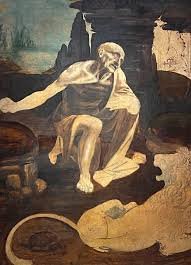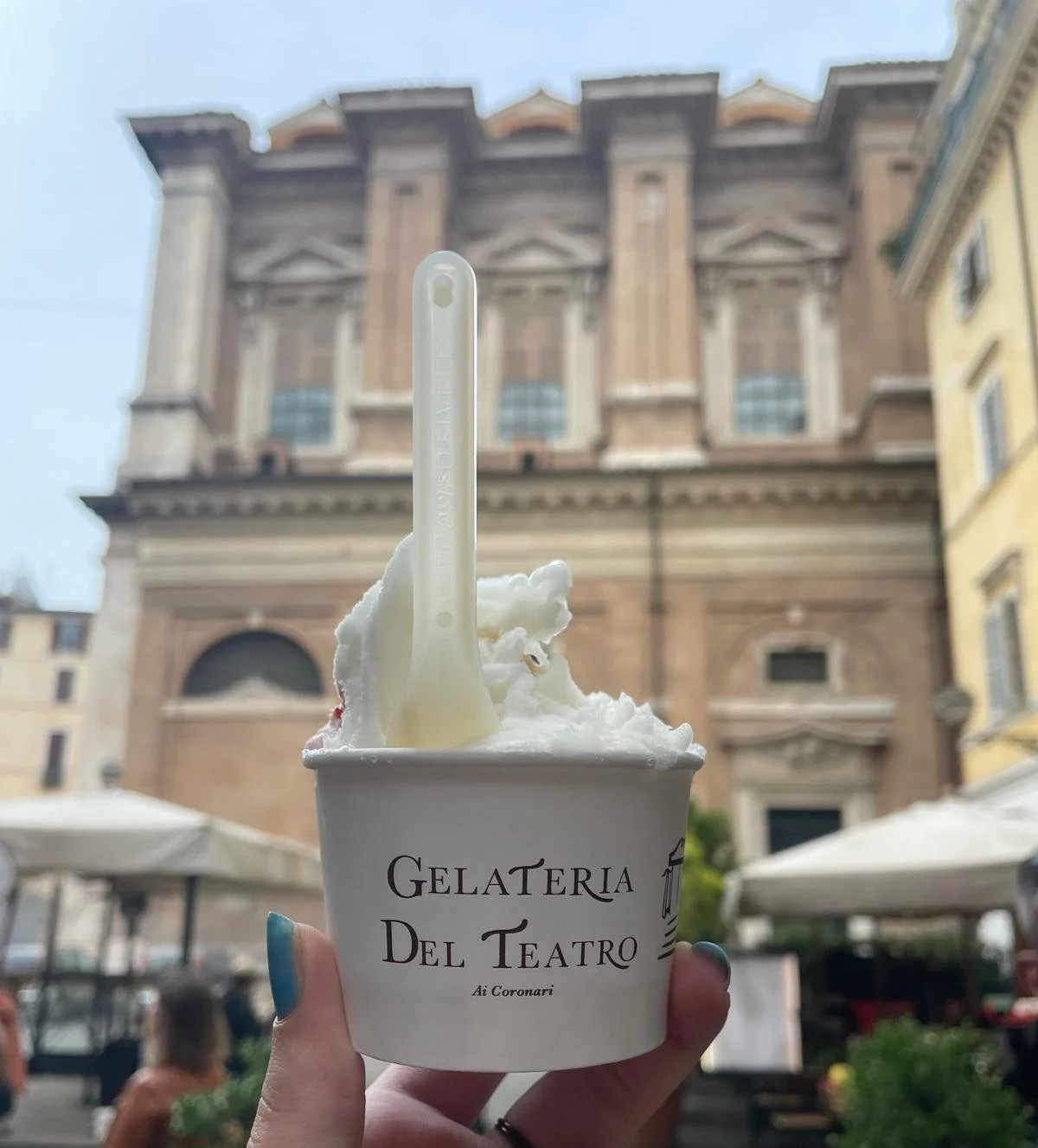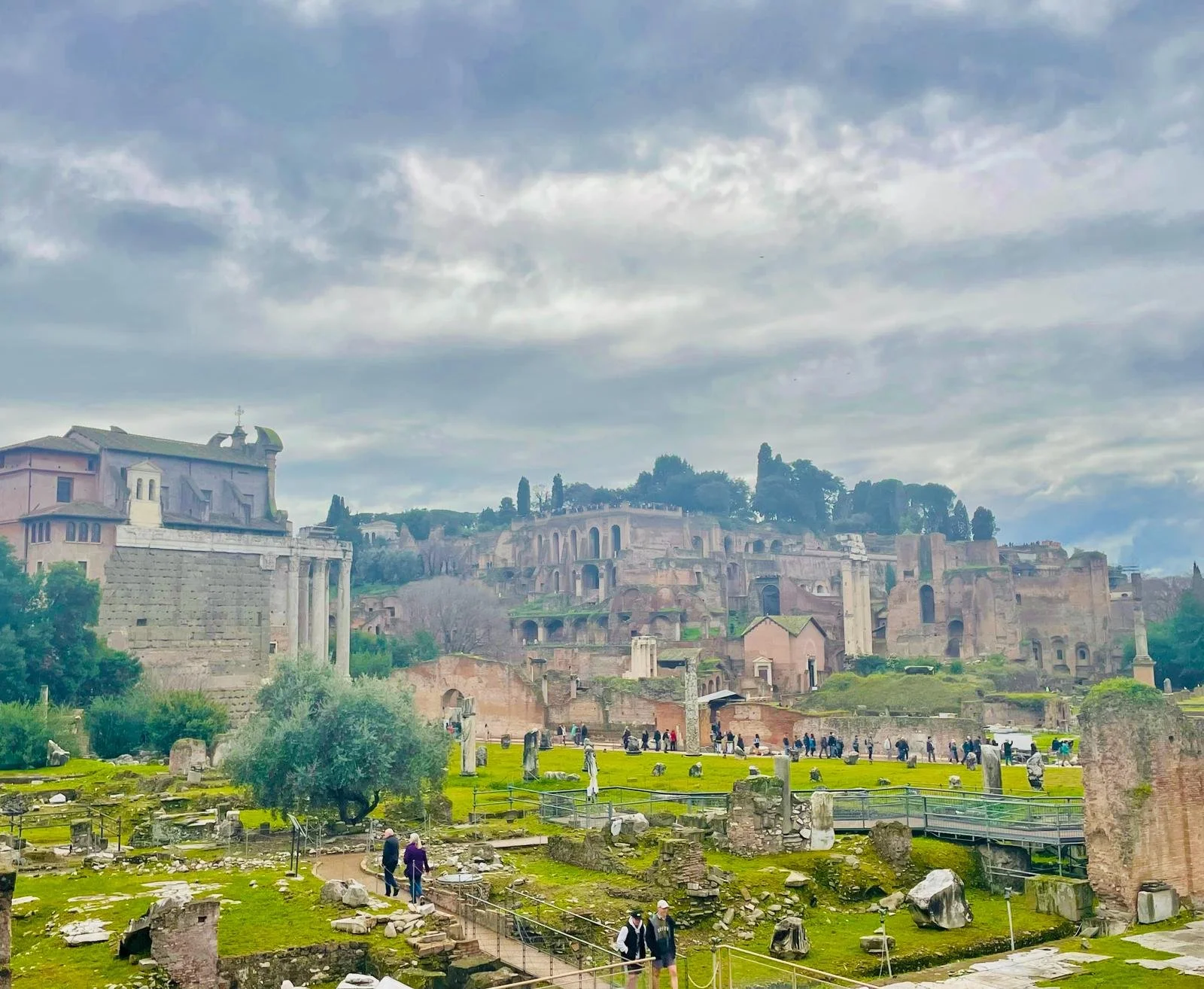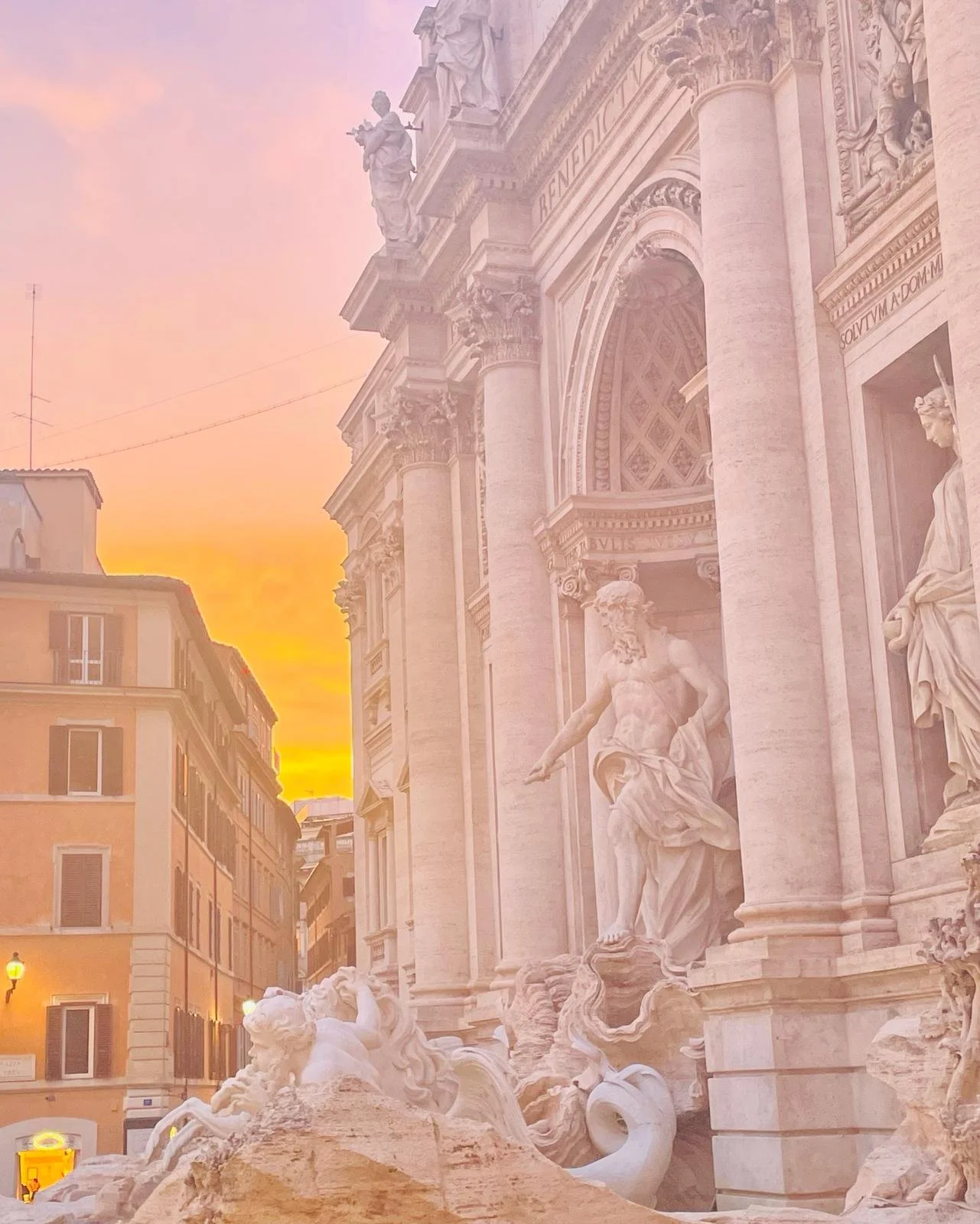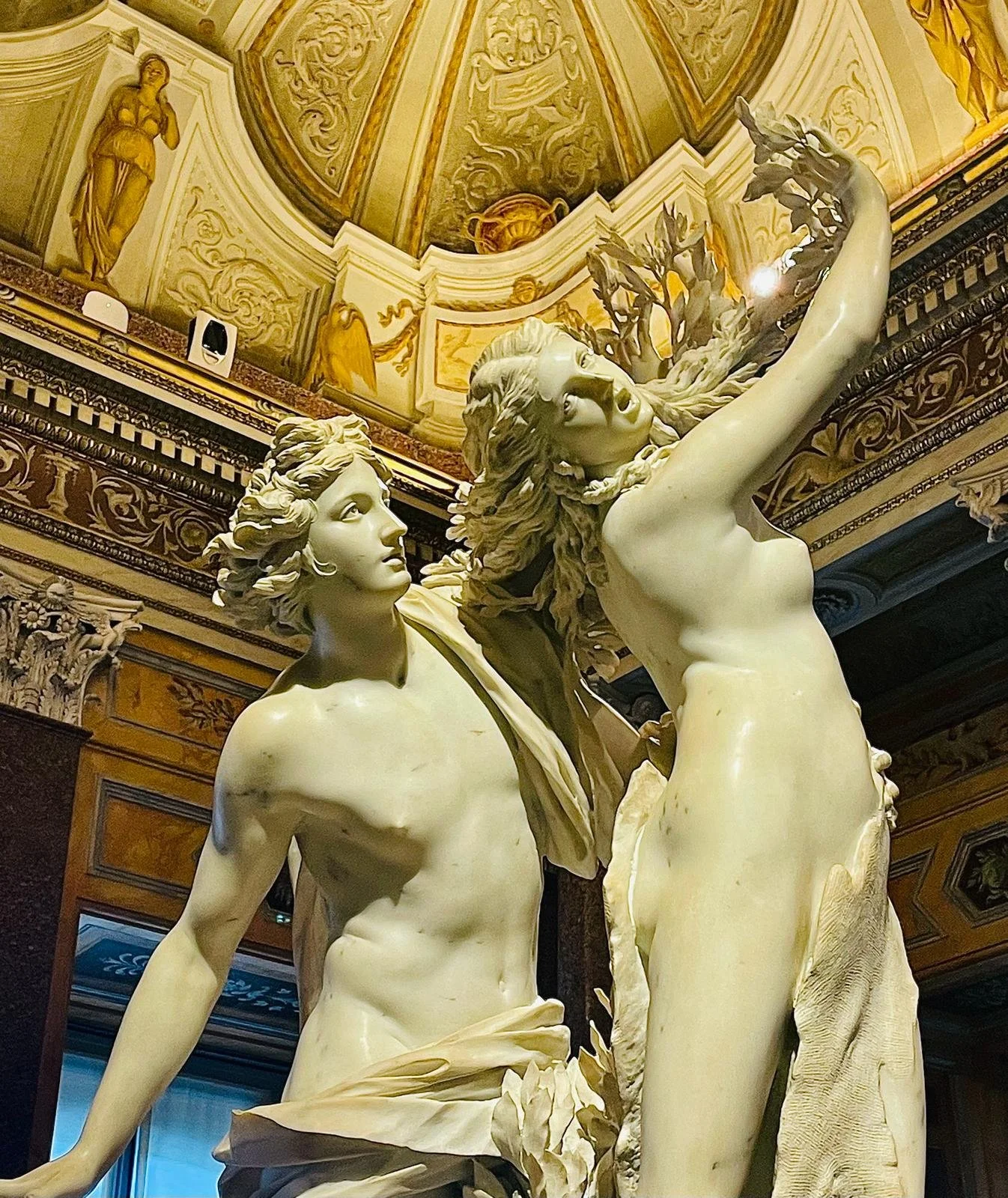An Art Historian's Guide to Rome
By Nicole Entin
To adapt the mediaeval proverb, it is arguably true that all art historians’ roads lead to Rome – at some point or another. Some visitors come chasing a Roman Holiday, others seek Federico Fellini’s Dolce Vita. The itinerant art historian certainly wouldn’t be blamed for shouting ‘Marcellooo!’ in front of the Trevi Fountain and searching for a lost kitten to befriend in the style of Anita Ekberg, but arguably, they come to Rome and Vatican City like pilgrims prepared to worship at the altars of Michelangelo and Raphael, Bernini and Canova.
I will freely admit that I am neither a scholar of the classics, nor the Renaissance, nor Baroque Italy. In my academic focus on the latter half of the nineteenth and early twentieth centuries, I encounter Andrea del Sarto more in the poetry of Robert Browning than in my weekly readings. But I – and all other students of art history at the University St Andrews – can recall the lectures in first and second year on the art of Rome. These were the lectures that set me on my path to becoming an art historian, even if I didn’t pursue these avenues of research. So when I arrived in Rome for the first time this February break, I had to create the perfect three-day itinerary that grappled with an important question for every visitor – what do you do if you don’t have an eternity to spend in the Eternal City? In this extended edition of the ‘Art Historian’s Guide’ series, I share the meticulously crafted travel plan that I’d recommend to every art historian visiting Rome. Because even if Rome wasn’t built in a day, you can certainly visit it in three.
Day One – The Musei Vaticani and St Peter’s Square
Your first full day in Rome will take you to the microstate of Vatican City, a country with arguably the highest concentration of art and culture per square metre. Make sure to book your tickets to the Vatican Museum well in advance, taking advantage of the reduced prices for university students, and select a time to enter the museum in the morning. My recommendation would be to start in the Museo Gregoriano Egiziano and the Museo Pio-Clementino – the Ancient Egyptian and Greco-Roman sections – with the latter’s highlight of the Laocöon Group, [Fig. 1] the sculpture on which the entirety of the Vatican Museums was founded, after being purchased by Pope Julius II and put on public display following its discovery in 1506.
[Figure 1] Laocoön and His Sons, c. 27 BC to 68 CE, marble, 208 cm × 163 cm × 112 cm, Museo Pio-Clementino, Vatican Museums, Vatican City.
Once you’ve finished with the art of ancient civilisations, take a diversion to the Pinacoteca, where the highlights include include Giotto’s Stefaneschi Triptych (c. 1320), Caravaggio’s The Entombment of Christ (1603-04), and Leonardo da Vinci’s St Jerome [Fig. 2] (c. 1480-90). This latter work, although unfinished, is particularly remarkable, revealing the ingenuity of the disegno for which Leonardo was renowned. After exiting the Pinacoteca, walk through the hall of tapestries and the Gallery of Maps to the Raphael Rooms, where The School of Athens fresco (1509-11) is located, and finally to the Sistine Chapel, with its famous ceiling painted by Michelangelo from 1508 to 1512. Giorgio Vasari characterises Michelangelo’s frescoes as the epitome of the Renaissance age and ‘a beacon of our art’, having ‘[illuminated] a world which for so many hundreds of years had remained in the state of darkness’. After exiting the chapel, be sure not to miss the Vatican’s unexpected collection of religious modern art, with works by Henri Matisse, Marc Chagall, the German Expressionists, and even Surrealists including Max Ernst and Salvador Dalí.
[Figure 2] Leonardo da Vinci, St Jerome, c. 1480-90, oil on wood, 103 x 74 cm, Pinacoteca, Vatican Museums, Vatican City.
After having a light and affordable lunch to refuel, return to the Vatican to brave the line to St Peter’s Basilica, where you can admire Michelangelo’s magnificent Pietà (1498-99). By the time you will have finished exploring the various sections of the Basilica and seen all its many treasures, you’ll certainly be in need of a sweet treat. A scenic stroll past Castel Sant’Angelo and across the Tiber will take you to the delightful Gelateria del Teatro [Fig. 3], with freshly made flavours such as rose with raspberries, kiwi, or Amazonian chocolate. As you enjoy your scoop, take a leisurely wander down the picturesque Via dei Coronari and window-shop all the antiques stores, dreaming of your own art collection as your first day comes to a close.
[Figure 3] Gelato from Gelateria del Teatro on Via dei Coronari. Author’s own photograph.
Day Two – A Walking Tour of Ancient Rome
It might sound improbable, but even an art historian can get museum fatigue. When in Rome, however, the ‘museum’ is practically everywhere you look – alive and vibrant – so there’s no worry of missing your daily dose of culture. The packed second day of this itinerary is all about getting fresh air and walking across the most ancient regions of the city. While you may recover from museum fatigue, walking fatigue is certainly at risk, so wear your most comfortable shoes!
Start your route from Trajan’s Column (completed in 113 CE), the triumphal monument that was the antecedent for other famous columns such as those in the Place Vendôme in Paris and the Nelson Column in London’s Trafalgar Square. While you may wish to book tickets to any of the sites in the Roman Forum [Fig. 4], they are arguably just as well – if not better – viewed from above. Walk onwards to the rest of Trajan’s forum and market to see the other sites built by the Roman emperors – Caesar, Augustus, and Nerva, nestled in the valley beneath the Palatine Hill. After you’ve wandered to your heart’s content inside or around the Forum and made your way to the Colosseum, it’s time for a quick recharge. If you’re craving a good pasta, try Vecchia Roma, an inconspicuous and relatively affordable taverna frequented by locals where the generously portioned primi piatti will cost you between eight and thirteen euro. If another gelato is all you need to fuel the rest of your day, try Fatamorgana Gelato, where you can find unconventional flavours such as pecorino and orange or basil, walnut, and honey.
[Figure 4] View of the Roman Forum and Palatine Hill. Author’s own photograph.
With the time remaining in the day, you have plenty of options to explore in the vicinity of the Forum. Leave the Trevi Fountain until sundown – when the Baroque sculptures of Nicola Salvi are perfectly illuminated by apricot and lilac-coloured light [Fig. 5] – and purchase a five-euro ticket to enter the Pantheon and pay your respects to Raphael, the first artist to be accorded the honour of being buried in this former second-century Roman temple. Alternatively, you may wish to visit the nearby church of San Pietro in Vincoli, where Michelangelo’s monumental sculpture of Moses (c. 1513-15) is found.
[Figure 5] Nicola Salvi and Giuseppe Pannini, Trevi Fountain, 1732-62, 26.3 m (height), Rome. Author’s own photograph.
If, however, you are in search of more ancient Roman history surprisingly coupled with animal philanthropy, you may want to visit the Largo di Torre Argentina, an excavated site where the ruins of Pompey’s Theatre – the site of Caesar’s assassination – can be found. Nowadays, this bloody site is also home to a cat sanctuary, wherenumerous strays and rescues are all provided veterinary care through the support of volunteer workers and donations. If you come by the shelter before three in the afternoon, you can meet some of these resident cats and support the sanctuary, while taking in the history of the Campus Martius.
Day Three – The Villa Borghese and Gallery
On your final full day in Rome, the museums await once more, but this time at the sprawling grounds of the Villa Borghese and its magnificent gallery, founded on the collection of Cardinal Scipione Borghese, patron to Caravaggio and the sculptor Gian Lorenzo Bernini. While at the time of my visit, several of Caravaggio’s masterpieces – including his Boy with a Basket of Fruit (1593) and the once-stolen Saint Jerome Writing (1606) – were on loan to the Museum of Art Pudong for the first exhibition dedicated to Caravaggio’s works in China, I was still able to marvel at his Young Sick Bacchus (1593) and David with the Head of Goliath (c. 1605-10) [Fig. 6], one of his final works painted before his mysterious death, in order to curry favour with Cardinal Borghese to return to Rome from exile.
[Figure 6] Michelangelo Merisi da Caravaggio, David with the Head of Goliath, c. 1605-10, oil on canvas, 125 x 101 cm, Galleria Borghese, Rome.
Recalling my first-year lectures on Bernini, I came into the gallery with high expectations of seeing his sculptures in situ – expectations that were met to the utmost. Walking around sculptures such as Abduction of Proserpina (1621-22), I could see for myself how Bernini defied the nature of his marble medium to render the palpable softness of Prosperina’s flesh giving way under Plato’s grip, or in Apollo and Daphne (1622-25) [Fig. 7], the invisible support struts incorporated into Daphne’s metamorphosing fingers, skilfully disguised as branches.
[Figure 7] Detail from Gian Lorenzo Bernini, Apollo and Daphne, 1622-25, marble, 2.43 m (height), Galleria Borghese, Rome.
After spending two hours at the gallery (note that tickets have a fixed entry and two-hour time slot), head outside to explore the gardens of the villa. If you’re visiting Rome in warm weather, you can rent a boat for three euros to row across the artificial lake in the middle of the park, admiring the Temple of Asclepius while on the water. If your feet have practically given out by this point, I would recommend hitching a ride on the little white train that circles the park, so you can see every point of interest while indulging in some childhood nostalgia. The train passes key landmarks such as the nineteenth-century hydrochronometer designed by Giambattista Embriaco (1872) [Fig. 8], the secret gardens of the estate, the zoo, and – oddly enough – even a replica of the Globe Theatre where Shakespeare’s plays are performed in Italian.
[Figure 8] Giambattista Embriaco, Hydrochronometer, 1872, Villa Borghese, Rome.
With the remainder of your trip, the way you spend your third afternoon in Rome should be entirely up to you. Looking for a slice of Italian film history near the Villa Borghese? Stop in Harry’s Bar, one of the filming locations for Fellini’s La Dolce Vita, historically frequented by film stars including Sophia Loren, Marlon Brando, and Audrey Hepburn – but maybe think carefully before splurging on one of their twenty-euro Bellinis. Still curious about some of the landmarks further away from the heart of Rome? Go to the bohemian Trastevere district, where you can find Donato Bramante’s fifteenth-century Tempietto, the first building in Rome to emulate the tenets of classical architecture. Alternatively, you may want to see the Cornaro Chapel at the church of Santa Maria della Vittoria, where Bernini’s transcendent Ecstasy of Saint Teresa (1647-52) is located, or Andrea Pozzo’s magnificent trompe-l’oeil ceiling frescos at the Church of Sant'Ignazio. However you decide to spend your time in Rome, there is something to discover in each corner of the Eternal City, where every route will reveal marvels of art and history.


